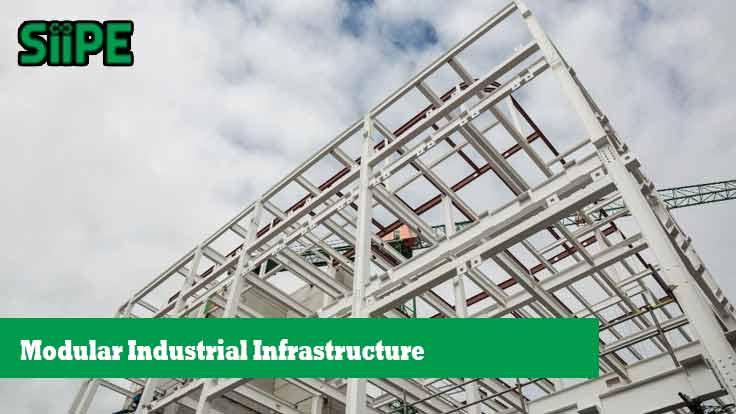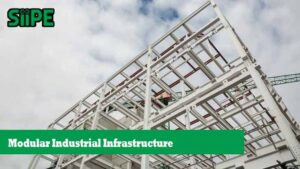The world of industry is evolving at an unprecedented pace. Global markets are demanding faster production, efficient logistics, and sustainable practices. Traditional methods of building industrial facilities—often costly and time-consuming—no longer match the speed required by businesses today. This is where modular industrial infrastructure steps in as a game changer.
By adopting modular concepts, industrial parks can construct, expand, and adapt facilities with greater speed and flexibility. From prefabricated warehouses to modular office spaces, the approach is reshaping how industrial properties are planned, developed, and managed.
This article explores what modular industrial infrastructure is, its key benefits, and why it is becoming essential for the future of industrial parks.
What is Modular Industrial Infrastructure?
Modular industrial infrastructure refers to the use of prefabricated, standardized units in building facilities within industrial estates. Unlike traditional construction, where everything is built on-site from scratch, modular infrastructure allows sections of buildings—such as walls, floors, or even entire office units—to be manufactured off-site and assembled quickly on location.
This method not only speeds up the construction process but also ensures cost efficiency and adaptability, which are crucial in today’s competitive industrial landscape.
The Advantages of Modular Infrastructure in Industry
1. Speed of Development
Time is one of the most valuable resources in business. Modular construction can reduce project timelines by up to 50% compared to traditional methods. Industrial parks can attract tenants faster because they can offer ready-to-use spaces in a fraction of the time.
2. Flexibility and Scalability
Businesses grow and evolve. Modular infrastructure allows companies to expand or reconfigure their facilities without starting from scratch. For example, adding new production lines or extra storage space becomes easier and less disruptive.
3. Cost Efficiency
By manufacturing components off-site, costs related to labor, waste, and material delays are minimized. This results in lower overall expenses for developers and tenants.
4. Sustainability
Sustainability is no longer optional. Modular methods reduce construction waste, optimize energy use, and align with eco-friendly industrial park initiatives. This makes modular infrastructure a key driver in building eco-friendly industrial estates.
5. Enhanced Quality Control
Since modules are manufactured in controlled environments, they often have higher quality standards compared to on-site construction. This ensures safer and more reliable industrial facilities.
Applications in Industrial Parks
The adoption of modular infrastructure in industrial parks can be seen in various forms, such as:
-
Warehouses: Pre-engineered steel structures that can be expanded easily.
-
Factories: Modular production units that allow businesses to scale operations.
-
Offices & R&D Centers: Prefabricated office modules provide fast and flexible working spaces.
-
Utilities: Modular power supply systems, water treatment plants, and waste management facilities.
By offering such versatility, industrial parks with modular infrastructure become more attractive to foreign investors, manufacturers, and logistics companies.
The Role in Attracting Investment
Investors are increasingly looking for low-risk, high-return opportunities. Industrial parks that adopt modular infrastructure stand out because they:
-
Reduce initial setup time for tenants.
-
Provide flexibility to adjust with market demand.
-
Offer cost savings in both short-term and long-term.
This makes modular industrial parks highly competitive in regions like ASEAN, where foreign investment is accelerating.
Challenges and Considerations
While modular infrastructure offers many advantages, there are challenges to address:
-
Initial Capital Investment: Although modular methods reduce long-term costs, the upfront investment can be significant.
-
Regulatory Approval: Local zoning and building codes may not always support modular construction.
-
Skill Gaps: Specialized training is required for installation and maintenance.
Overcoming these challenges requires strong collaboration between governments, industrial developers, and private investors.
The Future of Modular Industrial Infrastructure
The future is undoubtedly modular. As industries demand faster, cleaner, and more adaptable facilities, modular infrastructure will become the backbone of industrial development.
Technologies such as 3D printing, smart sensors, and AI-driven design are expected to further revolutionize the sector. In the coming decade, we can expect industrial parks to rely heavily on modular strategies, making them not just efficient, but also future-proof.
Modular industrial infrastructure is more than just a construction method—it is a strategic solution for building modern, efficient, and sustainable industrial parks. Its advantages in speed, cost savings, scalability, and environmental impact make it one of the most promising innovations for the industrial sector.
For businesses and investors, embracing modular infrastructure means being prepared for the future of industry. And for industrial parks, it represents an opportunity to stand at the forefront of global industrial transformation.











